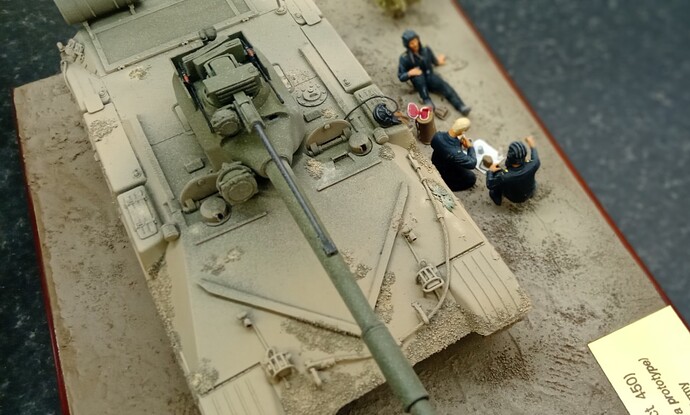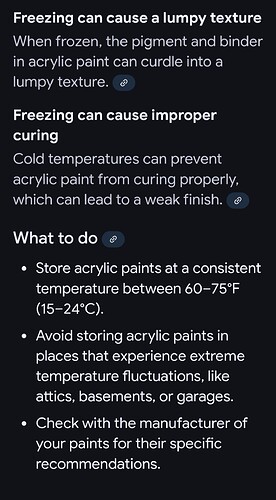I’m a dinosaur too …
Of course, the monetary cost of the travel is a consideration, and I do include that in my calculations when buying stuff on-line. In general, though, the cost of postage or shipping is usually comparable with the cost of the gas for a round-trip drive into the city. (This is not 100% but it is true as a general rule.) I live in an unincorporated rural area in which, IMO, the life-style advantages greatly outweigh the advantages of living in a city. So, the occasional inconvenient drive - when really necessary - to and from the city is ultimately a small price to pay.
At any rate, the travel vs. postage/shipping expenses are a “wash.” The same can be said for sales taxes paid. Online vendors in the US collect the same amount for sales tax as do local vendors (at least, they’re supposed to). Again, sales taxes are wash since they the same for both venues of purchase.
Therefore, if the per item product costs are relatively comparable on-line and in-store, the advantage goes to buying on-line because of the time savings - unless I need whatever it is “right now.” I do still buy stuff from my LHS, especially consumables, and I try to plan ahead and stay stocked up on those sorts of things I use all the time. Those trips, though, are often as not as much “social” as they are commercial. I may plan to meet friends and hang out at the hobby shop for some time visiting. I also have several modeling friends who I join with on one-day “road trips” to distant hobby shops - again, the thing is as much or more about the social connections than shopping for anything that I particularly need.
However, I do begrudge the “cost” of the time much more than the cost of the gas if I have to make a long drive into the city to make an otherwise trivial purchase.
I have them (Pro Acryl paints—“Made in the USA”) and they’re excellent. I think that their mix and flow is better than Vallejos, but their color choices are more geared towards wargaming colors than military colors. The bottle size is so big that they can be used as artist paints. Just due to their size, I haven’t used them as much as Vallejos though.
Currently, I am finding the AK Interactive Real Color Markers to be a godsend. They’re just like using colored highlighters to paint. The markers’ application is smooth, even, simple, fast, easy, and free of cleaning and wiping a brush. It’s a great way to “paint” for those that don’t have a lot of time to break out the brushes and paint bottles, or are too lazy to dedicate hours to the hobby.
See above…![]()
Watto.
Nah, I am still a die hard Humbrol user. Revell enamels are much harder to come by here at any shops locally. I am slowly switching over more to AK lacquers and various acrylics due to availability in shops here.
No you’re not alone. These were the only paints available on Israel for many years.
I admit to being stuck in my ways I suppose. I’ve tried acrylics when brush painting, but it just didn’t work out for me.
I’m not averse to utilising acrylic paints for the main colours of my AFVs etc; I’d be stuck without Tamiya’s Field Grey for my Brit olive green base colour of the 70s and 80s that’s for sure. And Tamiya Buff is nearly always the final thing I add to any model; how else to get that thrashing one’s tank over the training area until lunchtime effect?
What a timely topic! I too am getting back into actually building kits instead of just the stash and have the same questions regarding today’s paints. Back in the day, I used MM and Testors enamels along with Floquil lacquers and sometimes Humbrol when I could get it. Being partially color-blind, mixing colors is not my forte, so I’m more comfortable with a paint range that has the majority colors ready to go.
I have a LHS about 10 minutes away which carries Mission Models, Revell, and Tamiya paints. I was using some Tamiya paint with my last couple of previous builds ~25 years ago so will probably start back in with those. But I am intrigued with the AK and Hataka paint lines because of their color range and being able to purchase them in sets with most needed colors for a specific topic right there.
So now a question about online paint shipping and the weather. Living in the northern USA, it is currently cold, with mostly below freezing temperatures, so having paint shipped when it could possibly freeze worries me. Should I be concerned about freezing paint?
Regards,
David
Interesting question I have thought about myself. I don’t know the science but have not purchased mail order water based acrylics during the winter months. Might be ok with other types of paints.
From what I have read, yes, you should be weary of acrylic paint shipment in winter. However, I had MIG paints shipped from Europe during the winter. I contacted MIG about this and they said it is okay if it freezes, just mix it very well.
I live in Eastern Canada. There are shops here in Western Canada that will not post paints due to potential freezing. A question you could ask your LHS, how do they get their paints in the winter? I bet it’s not in heated cargo i.e.; sea container, tractor trailer.
DO NOT order acrylic paints in freezing temperatures! The pigment and water will separate and the water will freeze, destroying the paint.
I just feel a teeny bit smug with my archaic use of enamels(!)
That warm and fuzzy feeling of not worrying about all the quirks and temperaments of acrylics.
![]()
![]()
I shoot all lacquers, and I’m not ashamed of it.
EUA: Enamel Users Anonymous
![]()
Where can I sign up for EUA? ![]()
But now I must ask; what does below freezing temperatures do to enamel a and/or lacquer paints?
You just did ![]()
It’s about freezing points.
Water freezes at 0 Centigrade, so we add anti-freeze to our cars to avoid cracking the radiator or engine block.
I don’t know how much ‘anti-freeze’ properties the other components in acrylics contribute with.
But, I know this, beverages with low alcohol content (like awful home made “wine”) can be concentrated by freezing them. The water crystalizes but the alcohol remains liquid.
This is why anti-freeze must be in the proper concentration for different temperature ranges.
Compare with milk, basically water with a relatively low content of fat and some additives.
The fat is not in solution with the water, it is merely an emulsion (tiny droplets of fat sloshing around in water). If the water freezes the properties of the emulsion will change and the thawed
out milk becomes grainy, the taste changes since the emulsion has been destroyed.
The other type of paints, where the water is neither a solvent or a dilutant, will not suffer in the same way. The oils get sluggish and finally solidify but they don’t turn into crystals. When they are thawed out they go back to being liquid oils.
Transportation: In some areas the temperature can drop to 30 Centigrades or more below freezing. Air freight can get even colder if the cargo hold is not heated.
I hope this makes some kind of sense.


